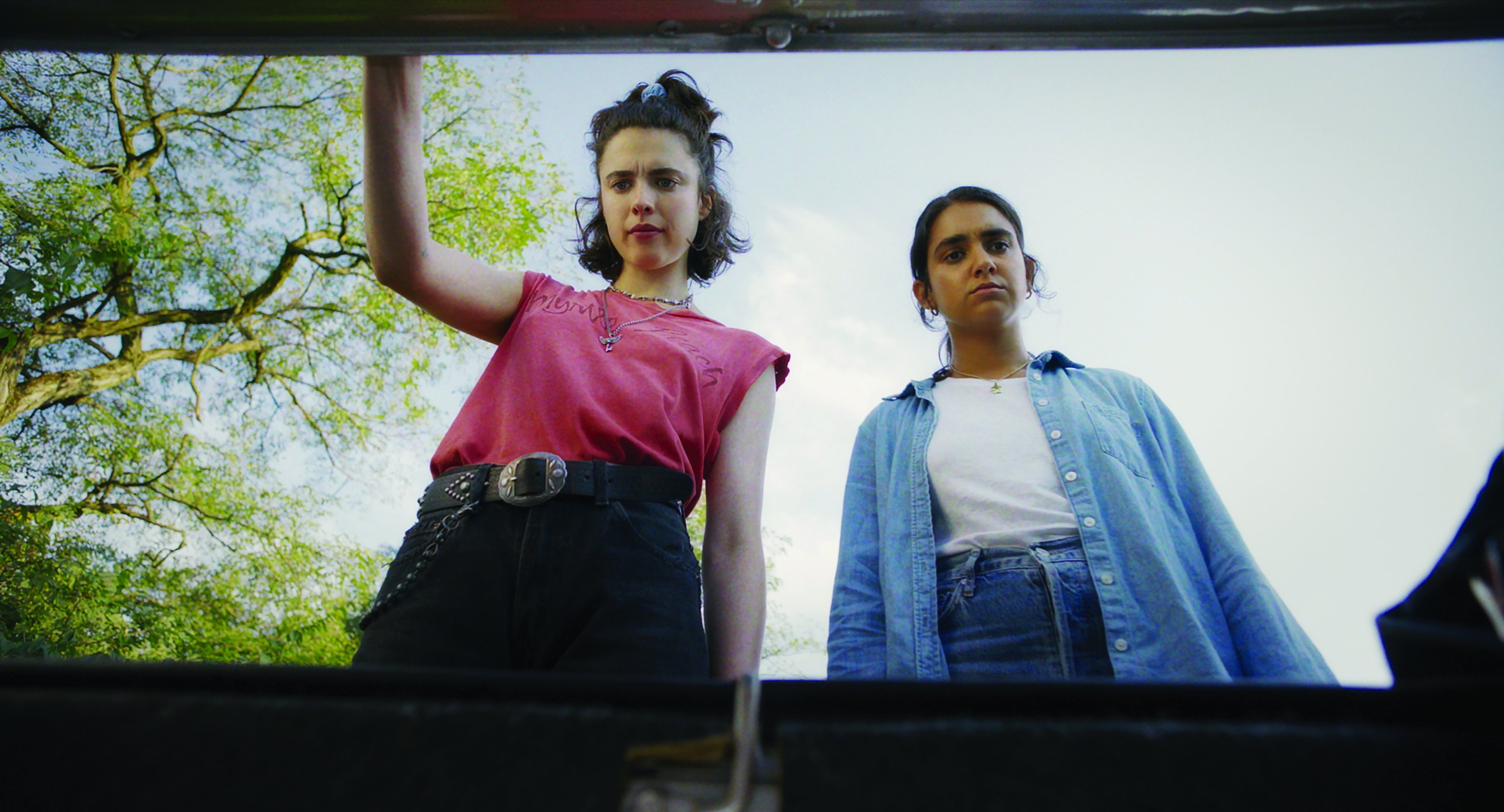
Drive-Away Dolls: A Show on the Road
Ari Wegner, ASC, ACS and director Ethan Coen bring B-movie aesthetics to a comedy caper.
Ari Wegner, ASC, ACS thought she had been pranked when an email from Ethan Coen popped up in her inbox. But it was, indeed, from half of the fraternal filmmaking duo who had made such seminal films as No Country for Old Men (AC Oct. ’07); O Brother, Where Art Thou? (AC Oct. ’00); and The Big Lebowski. Coen wrote that he and his wife, Tricia Cooke, had admired Wegner’s raw approach to Janicza Bravo’s comedy thriller Zola, as well as Jane Campion’s traditionally composed The Power of the Dog (AC Jan. ’22), for which Wegner had just received an Oscar nomination. They were astounded that both had been shot by the same cinematographer.
“I was already kind of in a dream state, having one of the most special experiences a DP can hope for — being on the awards-season circuit — and then to get this email out of the blue was like a dream upon a dream,” Wegner says.
“Tricia and I thought, ‘Oh, we’ve got to get in touch with her, this person is great,’” says Coen.
Coen asked Wegner if she would be interested in shooting a film he and Cooke had co-written and had long wanted to make. The project, Drive-Away Dolls, was like Zola in that it centered on a road trip to Florida, but it was purposely designed to be a low-budget B picture — what Coen affectionately calls “a trashy movie.” Wegner adds that her prior work on Zola — a “run-and-gun,” 35-day shoot — was an ideal prerequisite for this project and helped them make their days.
The story follows Marian (Geraldine Viswanathan) and Jamie (Margaret Qualley), two young lesbian women who sign up to drive a car from their hometown of Philadelphia, Penn., to Florida so they can get a free trip to Tallahassee. Little do they know that the car’s trunk holds a briefcase and a container of dry ice, both wanted by a politician (played by Matt Damon), who sends his goons in pursuit of the women.
Wegner jumped at the chance to shoot the picture.
“There are very few scripts that are just perfect — a perfect example of whatever genre they are. I was laughing to myself reading the script, chuckling out loud. With filmmakers like that and a script like that, the budget’s not a factor for me.”
— Ari Wegner, ASC, ACS
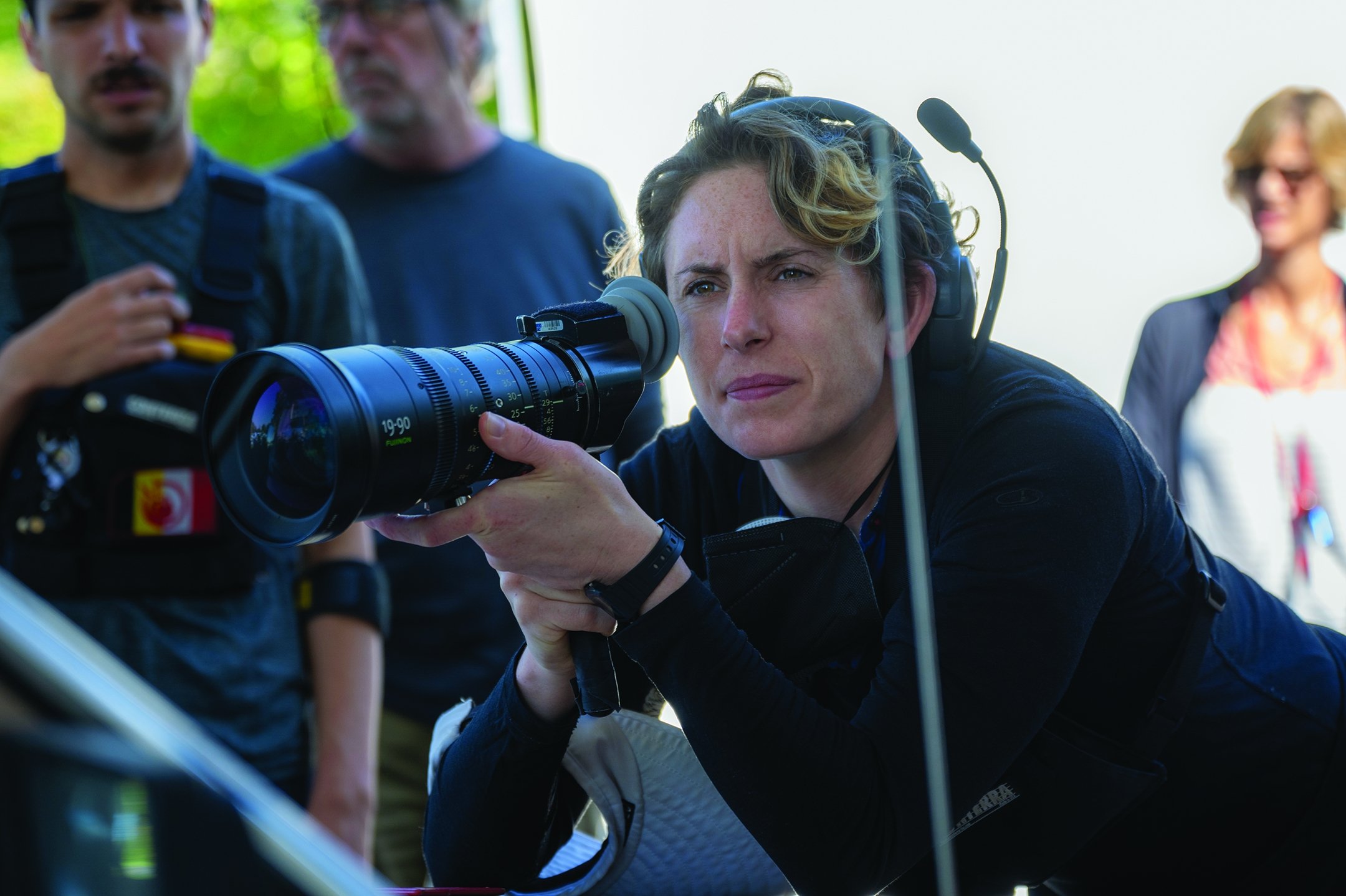
Shared Space
During prep, Wegner, Coen and Cooke’s partnership became increasingly tight-knit, thanks in part to their decision not to work in separate silos. “We shared an office where we all just sat together, literally sharing the space,” recalls Coen. “We really enjoyed each other’s company, and it felt weird for us to work in different rooms].”
Discussions about the visual approach were ongoing, and some of Wegner’s suggestions pertained to the film’s psychedelic sequences; she dug up scratchy, experimental shorts and kaleidoscopic and ink-blot references from the ’60s to show Cooke and Coen.
“Pictorialism Was Our Enemy”
Coen and Cooke saw Drive-Away Dolls as being in the campy tradition of directors like Russ Meyer (Faster, Pussycat! Kill! Kill!) and Doris Wishman (Satan Was a Lady), and they wanted to employ similar visual techniques. “When we talked to Ari about how we wanted to set up the shots, it was like, ‘Just bring more fun and more energy into the movie,’” Cooke says. “A lot of it had to do with crash zooms or fun, cheesy angles that lent themselves to a B movie, but also felt like they had more power.”
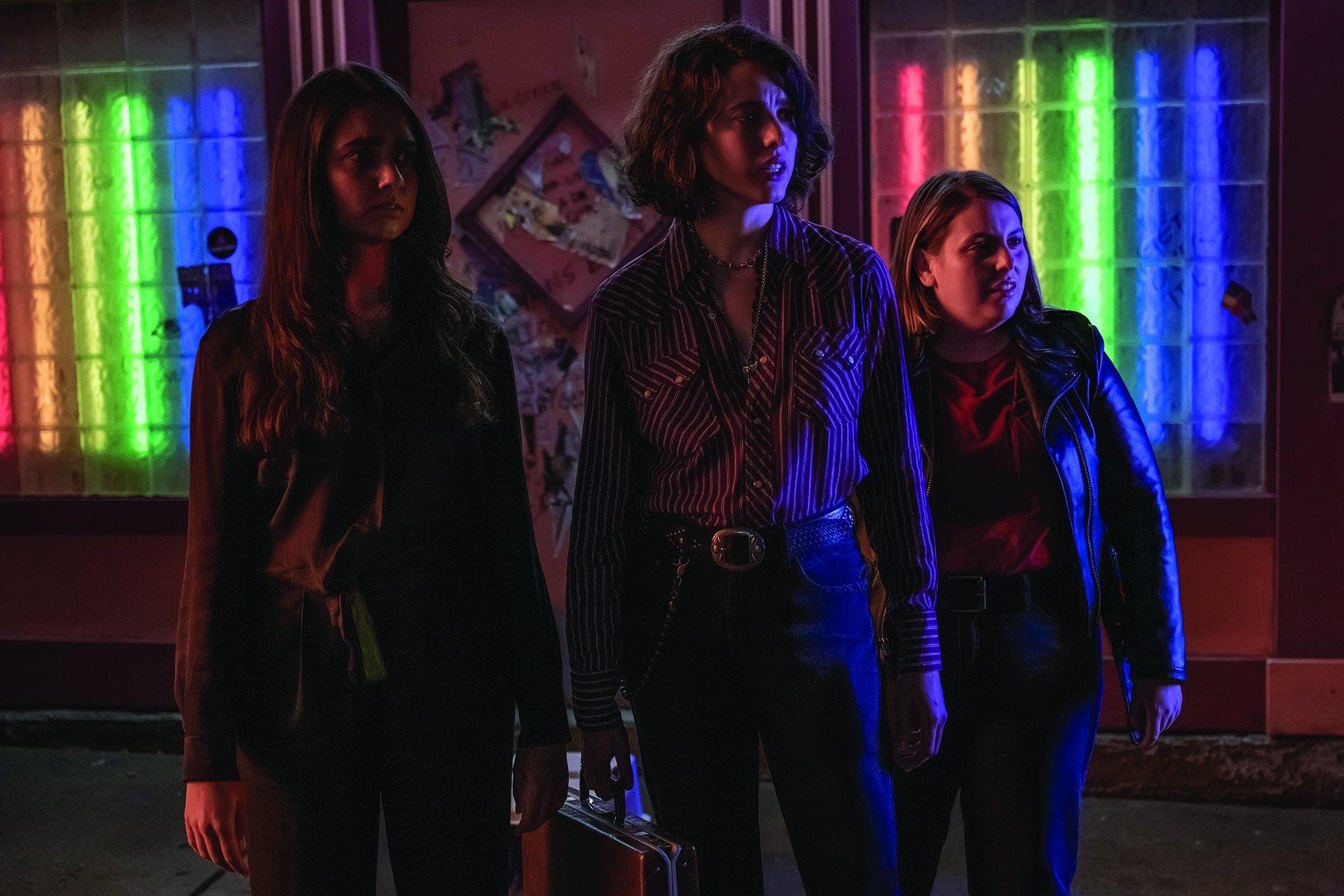
Coen adds, “Pictorialism was our enemy. That’s why we responded to Zola. It wasn’t about pretty pictures and architectural things. Ari understood that. We never even had to talk about it with her. She just understood the film’s identity.”
Storyboard artist J. Todd Anderson’s work gave Wegner a roadmap, but they were just the beginning. “Obviously, there are the transitions, crash zooms and Dutch tilts — the whole language of the genre — but there’s also the performance style, the locations, the music and the sound effects that all tell you what the genre is,” says Wegner. “Often a shot was designed specifically to highlight a comic sound effect that would accompany it, like the flubb-flubb of a flat tire on the road or the zip of two menus parting. There’s plenty of comedy in the sounds. Cinematography alone can’t make a B movie.”
B-Movie Visuals
Wegner shot Drive-Away Dolls on the Arri Alexa 35 in 4.6K 3:2 Open Gate mode, in the 1.85:1 aspect ratio. She shot most scenes at an ISO of 1,600, with some low-light material shot at 3,200.
Wegner used the Alexa’s K445 Default texture most of the time, though she occasionally selected the P425 Cosmetic texture for closeups or L345 Shadow for low-light situations. “I really like what L345 does to noise,” she says. “It desaturates it a lot, so the phenomenon of seeing colorful red, green and blue noise is greatly reduced.”
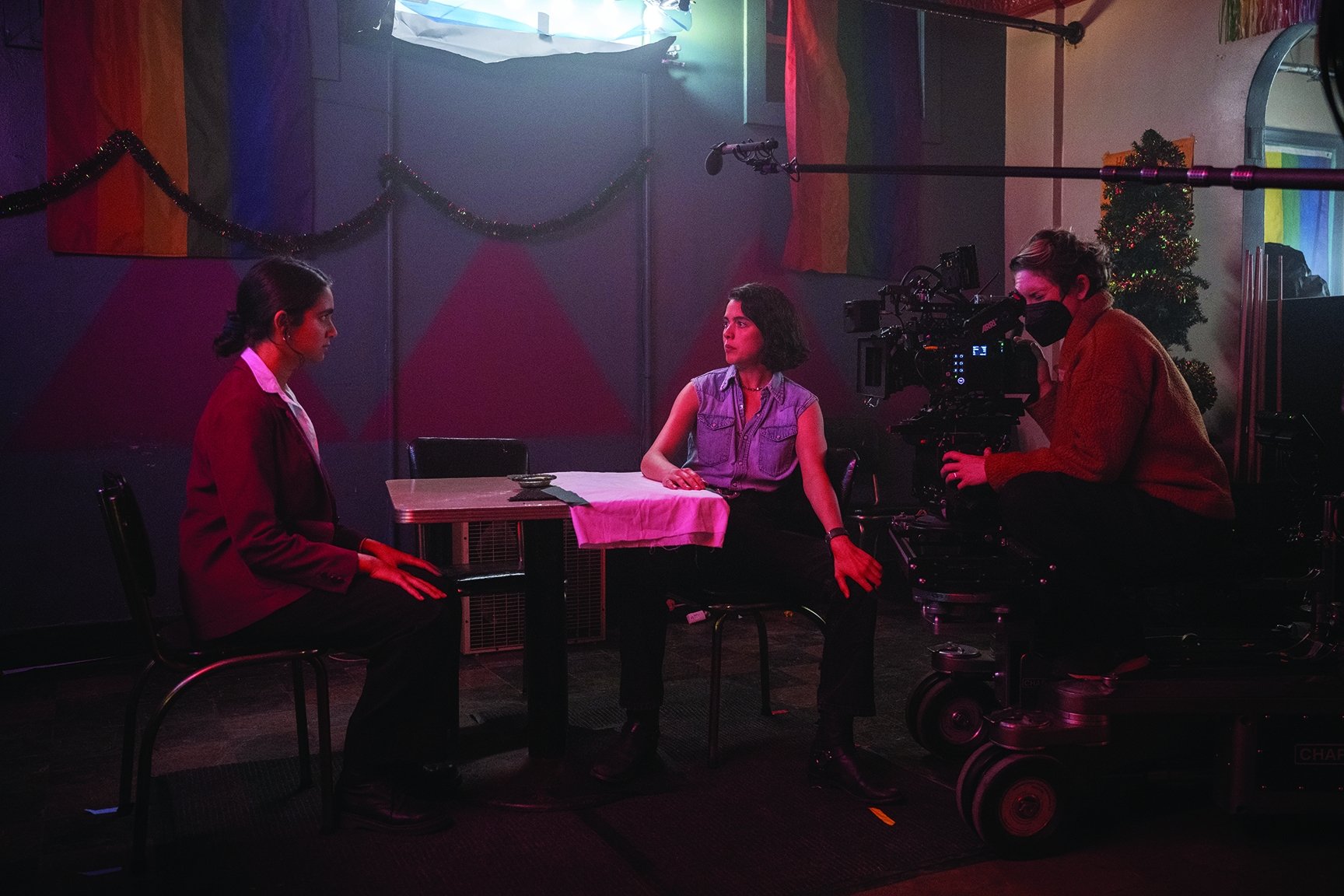
Wegner selected Arri/Zeiss Ultra Primes, supplementing them with an Innovision Probe II Plus for extreme low angles and Angénieux Optimo Ultra 12x 24-290mm and Fujifilm/Fujinon Premier Cabrio 19-90mm lenses for crash zooms.
“We talked a lot about using wider lenses, and about the proximity of the camera to the actors,” recalls Wegner. “Ethan has an allergy toward long lenses — for him, a 60mm would be bordering on telephoto. I really enjoy deeply understanding a director’s natural preferences and aversions. Jane Campion, for example, gravitates toward long lenses: For her, the 60mm would be a standard lens.” With a laugh, she adds, “Ethan and Jane could probably share one lens kit between them and never reach for the same lens — their preferences are pretty much opposite.”
Front vs. Back
Wegner took care not to favor backlighting over frontal lighting. “You start looking in the real world and realize it’s not necessarily true that things look best backlit. I love lighting from below, which is not traditionally meant to be flattering. I find it so beautiful, so angelic when the light hits under the eyebrows and you get a little eyelight on the bottom of the eyes and the jawline.”
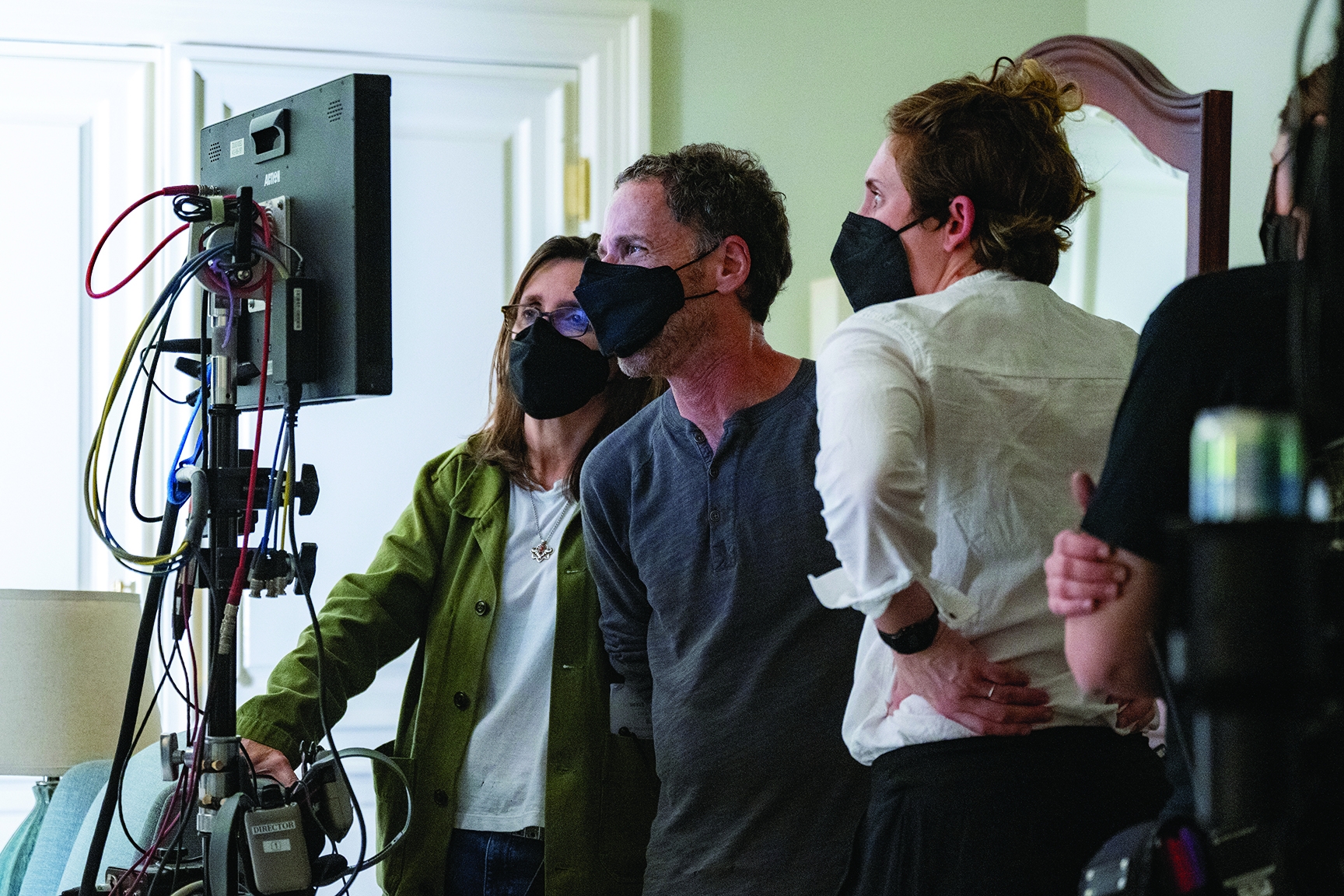
Wegner’s use of front lighting in Marian and Jamie’s El Conquistador hotel room surprised Coen. “I’ve been trained by [ASC members] Roger [Deakins] and Bruno [Delbonnel],” he notes. “During the day scene before the goons break in, we’re set up on the window side of the bed, looking at the two women, and my first thing to Ari is, ‘We want to be on the opposite side, right? We want them backlit. You don’t want to be on the window side because it’ll be flat.’ She said, ‘No, I’m all right, I’ve got the two windows.’”
Outside those two windows, Wegner placed HMIs bounced into 12'x12' Ultrabounces to replicate the cool sky, and Jo-Lekos and Source Four LED lights for the warm morning sun. That warm, broken-up front light hit the floor, creating an uplight on the actors. “They’re not getting hit by the shaft coming through the window, but the bounce coming up off the floor,” says Wegner. “Anywhere the light hits the floor becomes a source, which I find both realistic and very beautiful.”
“It all looks shaped, not flat,” Coen says admiringly. “I don’t quite know how she does it, but everything was so easy.”
Parked in Pittsburgh
Much of Drive-Away Dolls happens in cars, and because rigging vehicles on location can take hours, the filmmakers decided to shoot the driving scenes at 3 Rivers Studios in Pittsburgh. Many interiors, including the hotel rooms, were also shot on the facility’s soundstages.
Visual-effects supervisor Michael Huber advised Wegner to shoot car interiors without a windshield because one with the proper level of reflectivity could be created in post. No virtual-production techniques were employed on-set, as VFX backgrounds couldn’t be generated in real time because those plates had thus far not been shot — they needed to show winter in Philadelphia, and it wasn’t quite winter yet. Therefore, the backgrounds were applied in post, aided by the use of greenscreen that surrounded the cars.
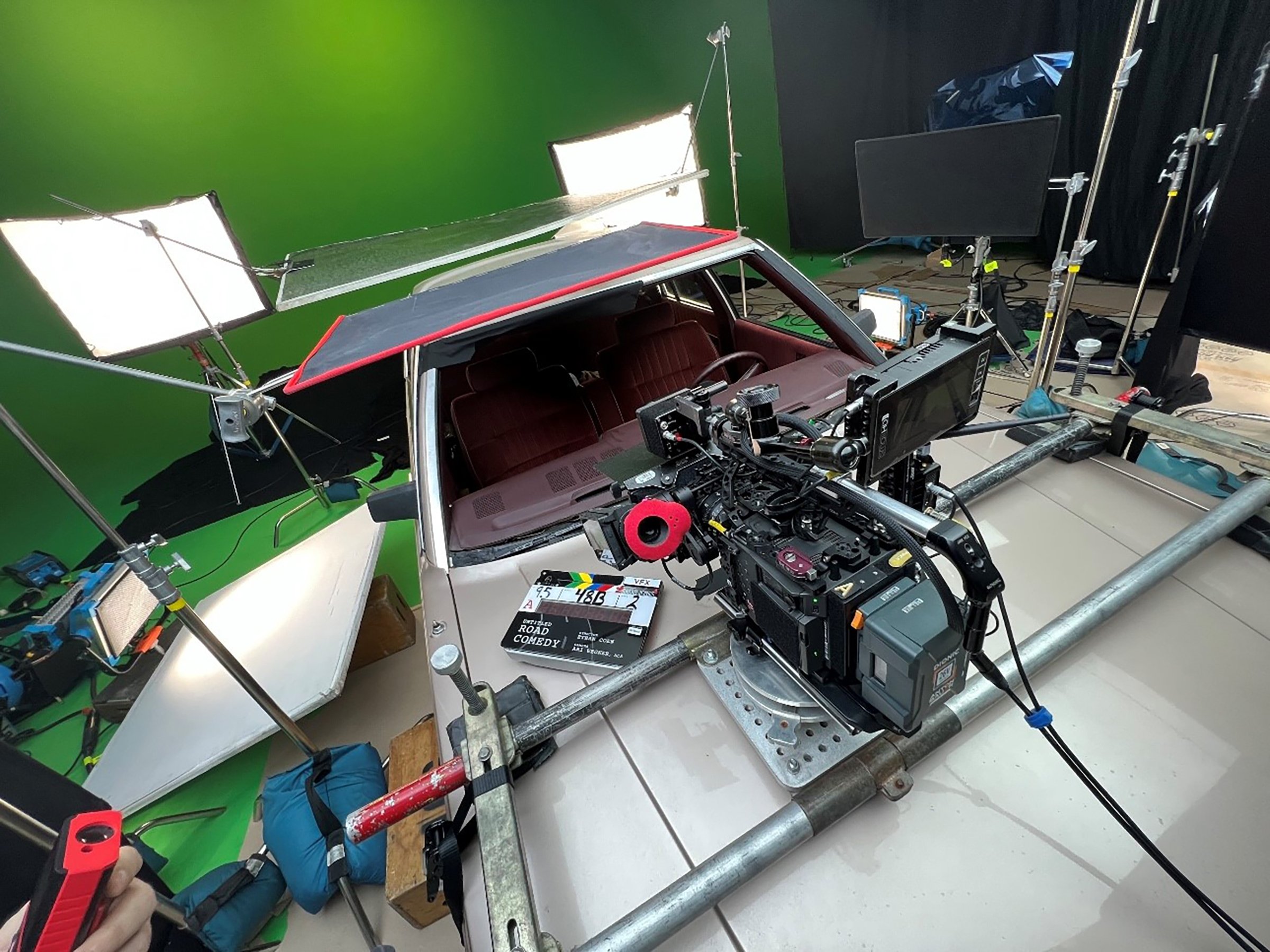
To light the greenscreen, Wegner’s crew set up Arri SkyPanel S60s and hung a 12'x12' Ultrabounce above the cars to form a sky, which was illuminated by Arri M40 and Creamsource Vortex8 fixtures. For bounce, bleached muslin and beadboard on the studio floor were lit by SkyPanel S30s and Arri M18s. Wegner varied the color temperature of the sky and ground, depending on the location and time of day of the scene. A soft, warm backlight was added for Florida scenes. “As they drove south, we made it a bit more sunny, but not so sunny that you couldn’t also use it with an overcast plate — a possibility we had to allow for,” notes Wegner.
For night car interiors, the crew hung black solids in front of the greenscreen to stand in for the night sky. Astera Tubes programmed to display a chase sequence (via animation of individual pixels) replicated the look of passing streetlights, and the M18s were bounced into the floor poly to create headlight reflection off the pavement. As a final touch to imply a sense of movement, Wegner illuminated some light atmosphere that was circulated by fans.
In post, Huber and his team added dynamic lighting to fit the plates. Wegner also worked with supervising colorist and ASC associate Peter Doyle at PostWorks in New York to finesse the match.
Rainbow Explosions

In terms of color, the filmmakers strove for an oversaturated look. They discussed with Wegner how different colors could be used in different locations to give the cities, bars and hotels distinct identities. “That’s where LEDs came to the rescue,” Wegner says.
She and gaffer Bill O’Leary deployed SkyPanels and multicolored Astera Tubes to increase color saturation in the lighting, and O’Leary devised a polyboard with multiple Astera Tubes strapped to it, which Wegner describes as a “mobile rainbow.” It was used as a key light or to create rainbow reflections, bringing color to surfaces such as wet pavement at a gay bar. “That bar scene is like a rainbow explosion of everything — lighting, design and wardrobe,” Wegner says.
Drive-Away Dolls might be the cinematographer’s first comedy, but it’s probably not her last. Coen and Cooke are already discussing their next project with her — a sequel of sorts.
“Ethan and Trish want to make a queer trilogy,” Wegner says. “Hopefully, that project will be the next thing.”
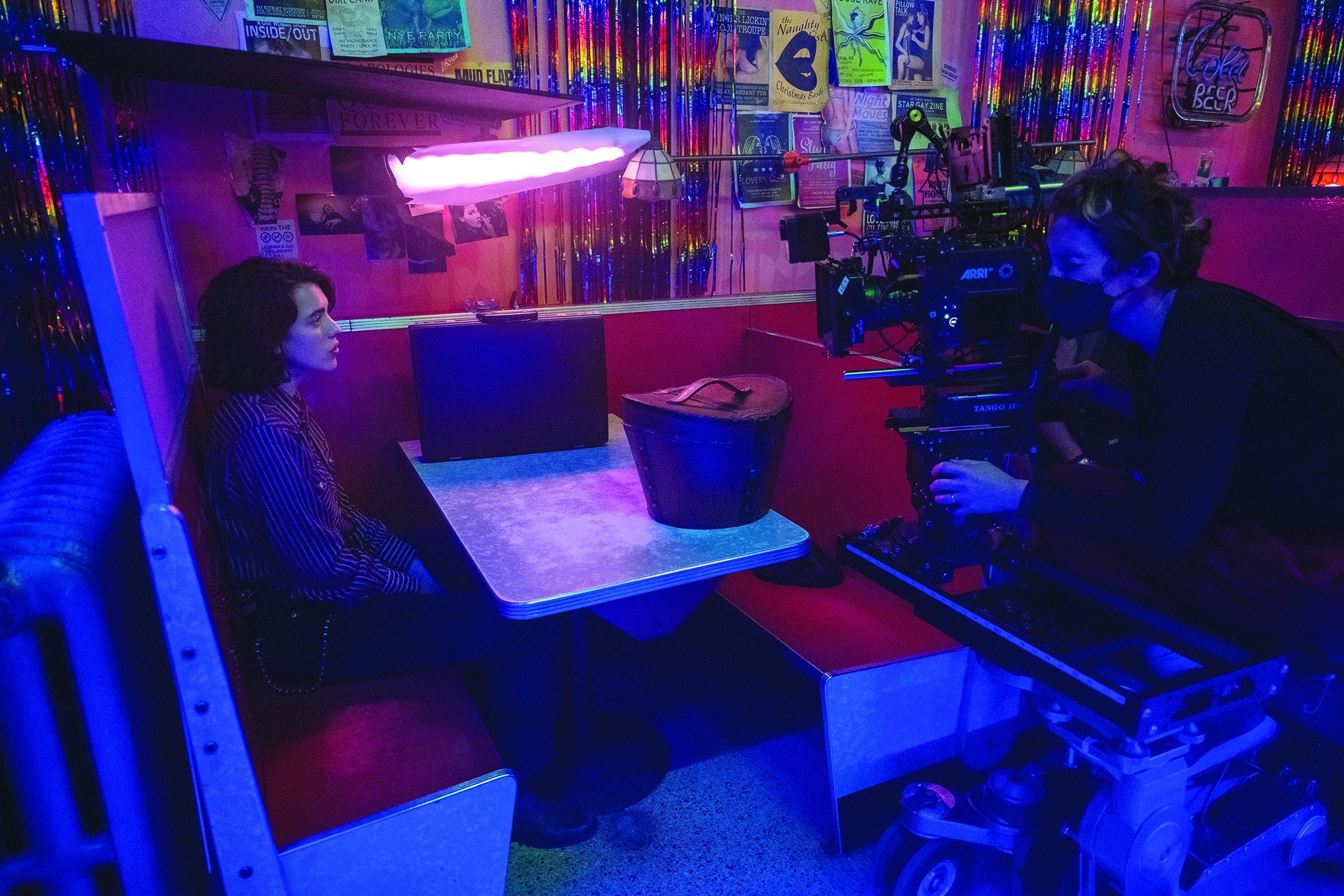

Tech Specs
1.85:1
Camera | Arri Alexa 35
Lenses | Arri/Zeiss Ultra Prime, Innovision Probe II Plus,
Angénieux Optimo Ultra, Fujifilm/Fujinon Premier Cabrio
Lighting Spotlight | Surface and Texture
In Drive-Away Dolls, Wegner’s lighting philosophy focuses on the surfaces the light hits.
“Each type of surface requires a different approach depending on how reflective it is, what texture or color it is and how we want it to look,” she says. “Different surface types that are next to each other are going to look different even with the same light on them. So, I try to think about what type of surfaces we are lighting, and plan from there.”
She cites one shot, in which Senator Channel (Matt Damon) is lying on the wet road at night, as a prime example of this approach. “We have the surfaces of his skin surrounded by three very different black surfaces: road, jacket and beanie. The wet road is black, rough-textured and incredibly shiny, whereas his leather jacket is black, very smooth and moderately shiny. Then, the beanie is black with a knit texture, almost light-absorbent. One of the units we used was a rainbow of Astera tubes, and you can see how it shows up in the shiny road as a reflection — we see the individual colors of the rainbow — whereas in the more matte skin and jacket, the colors have mixed together. And in the light-absorbent beanie, it doesn’t show up at all.”
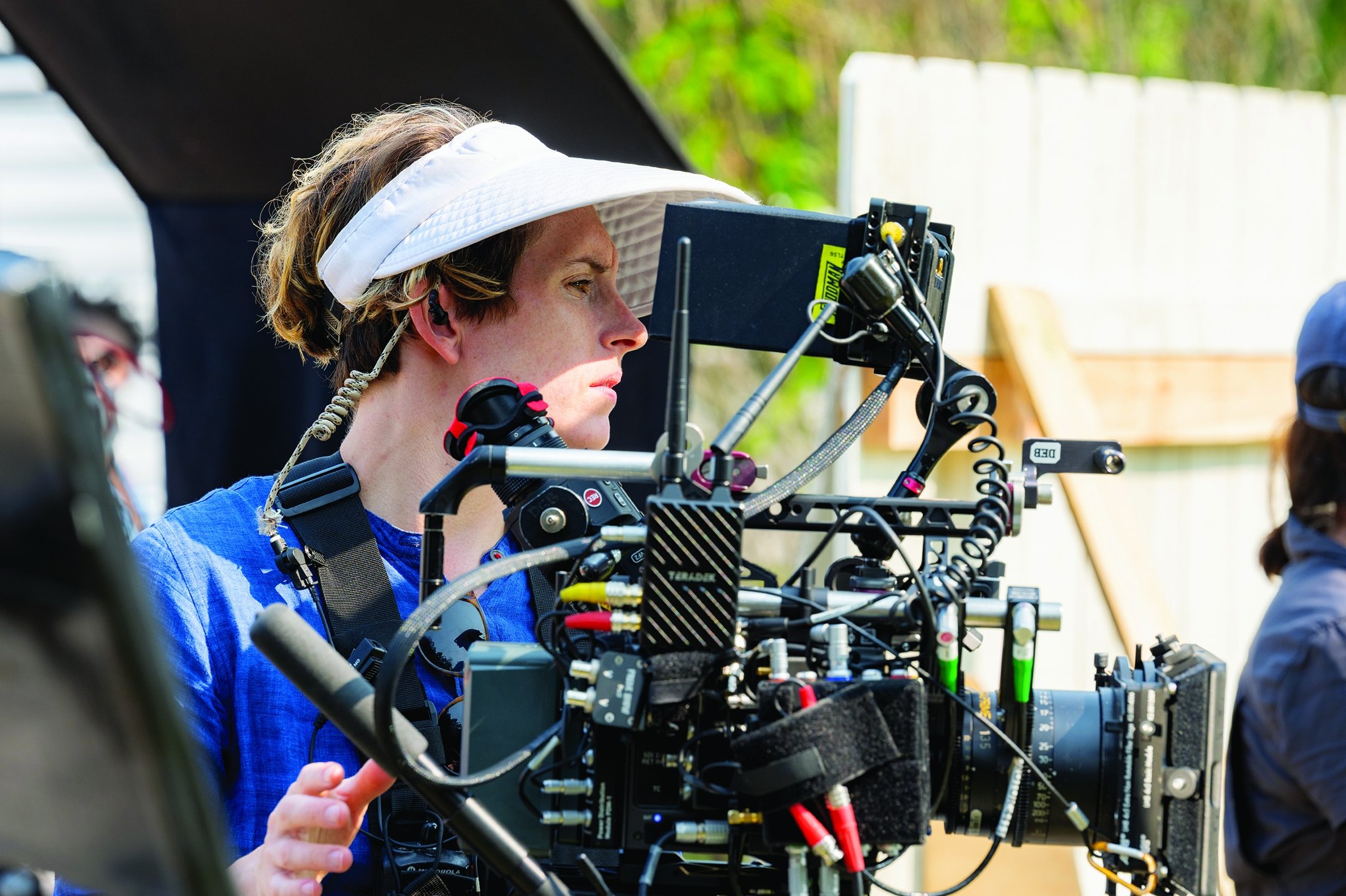
Lighting Spotlight | Ethan Coen on Collaboration
“I don’t have a theory of light at all. I thought it was just remarkable that Ari was so different from Roger [Deakins, ASC, BSC] and so different from Bruno [Delbonnel, ASC, AFC], and not due to any direction on our part — it’s just how she works.
“Roger is all bounce: It’s what he’s famous for, and he’s just great. Bruno — I don’t know how to describe it, but he’s all lamps and bounce. Ari uses these LED lights … her process was totally new to me. It’s like, ‘You want more light here?’ [And gaffer] Bill O’Leary would throw down some LED light. It was like sprinkling fairy dust.
“Our input was zero in terms of lighting. I was just totally struck by it.”






